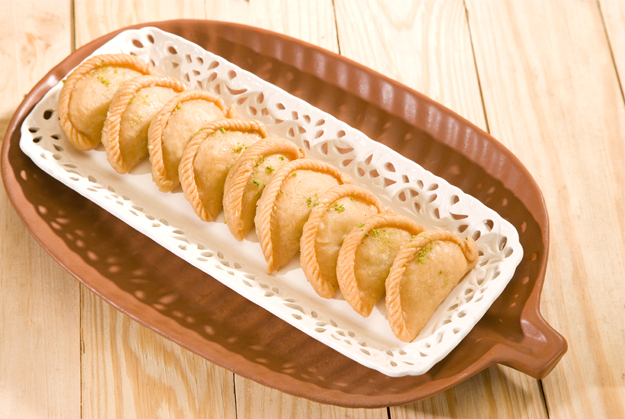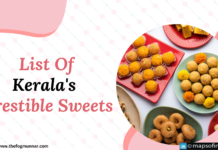
Home-made sweets have a unique taste and that can be enjoyed only when they are cooked at home. Yes you can get them at shops but somehow that taste is missing. Maybe the love of the person who cooks them is an essential ingredient to lend that unique taste. I still remember my mother used to prepare gujhiya during Teej festival in which this is offered to Lord Shiva and Goddess Parvati. During this festival the married women in Bihar and Uttar Pradesh fast for the whole day and they don’t even drink water. I don’t know how my mother managed that. But I used to look forward to this festival as I would be able to have delicious gujhiya.
Gujhiya is favourite sweet across India. It is made in different ways like there is khoya or mawa gujhiya, almond gujhiya, pista gujhiya and even apple gujhiya. This sweet is mostly prepared in festivals, but you can try it any time. Here I will share the recipe of mawa Gujhiya or perakiya as it is called in Bihar and Uttar Pradesh:
Ingredients for the stuffing-
Mawa (khoya) – 400 gm
Semolina or sooji- 100 gm
Ghee – 2 table spoon
Sugar – 400 gm
Ingredients for the preparation of flour for Gujhiya
White flour – 500 gm
Milk – 50 gm
Ghee – 125 gm
Gujhiya Recipe
Roast sooji with ghee, till it is reddish in color. Powder the sugar and add to the sooji. Add Khoya to this mixture as well as ghee and keep stirring till the ingredients properly mix. Remove the mixture from fire and let it cool. Prepare dough of white flour adding milk and ghee to it and take care that it has elasticity that is it is not too hard or too soft.
Now make round pieces and flatten them in the shape of poori but a bit smaller in diameter than that. Add a spoonful of stuffing in it and fold the round piece in a semi-circle. Now comes the difficult part which is you have to close the end of the semi-circle in a way that it overlaps. That gives the gujhiya a nice shape and also prevents the stuffing to come out of the dumpling when you fry it. With little practice you can do this. You need to just keep in mind that when you fold the edges it is going to overlap over one another. The last step is frying the gujhiya in hot oil on slow flame. Remove them when they are golden in color.
You can store the gujhiyas in airtight container for few days as well.
To know more about Indian Food, you may refer to the following:



